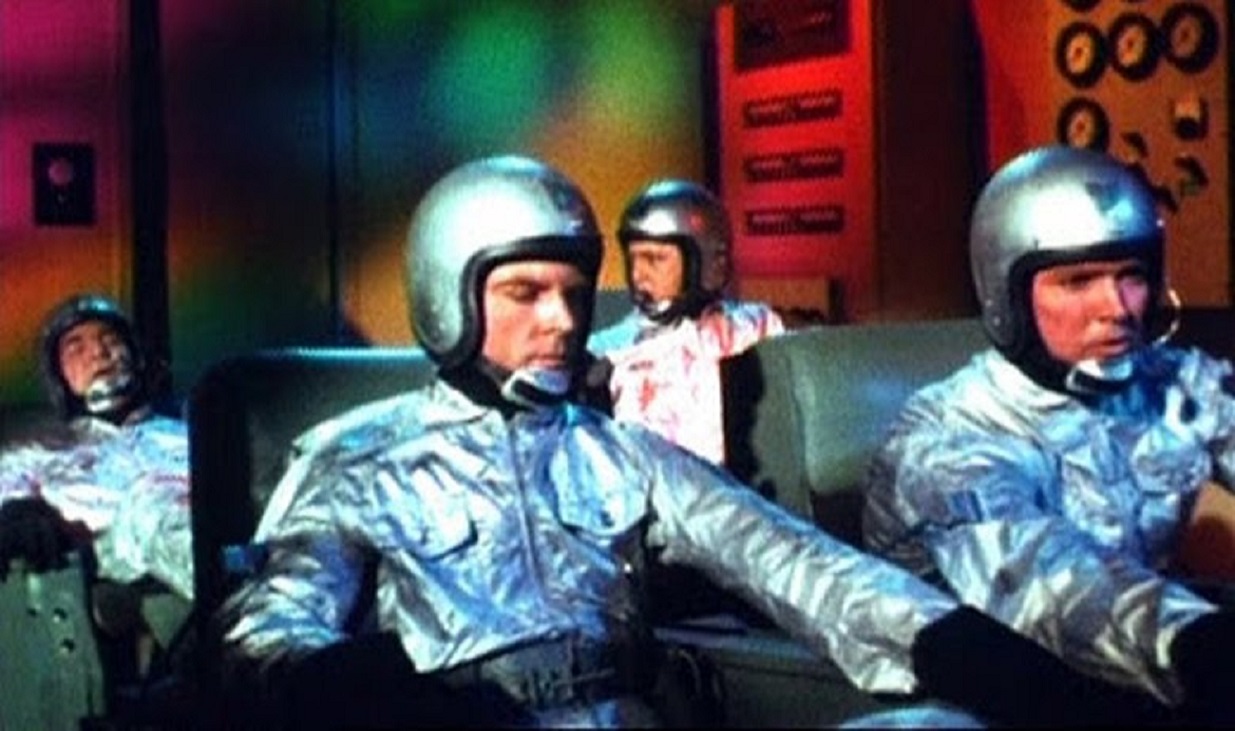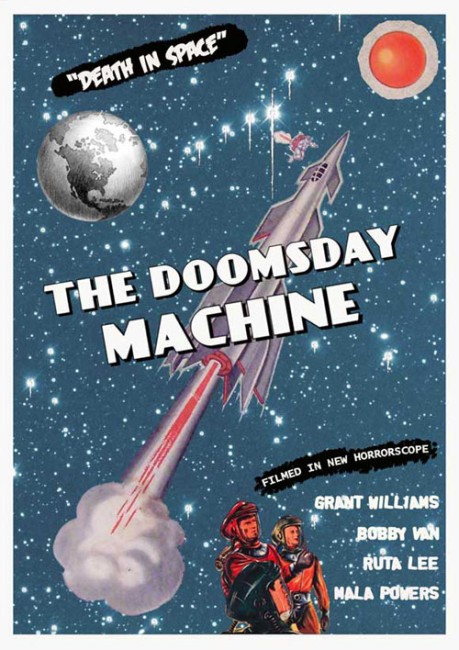USA. 1972.
Crew
Directors – Harry Hope & Lee Sholem, Screenplay – Stuart James Byrne, Producer – Harry Hope, Photography – Stanley Cortez, Visual Effects Creator – David L. Hewitt, Art Direction – James E. Schwarm. Production Company – First Leisure.
Cast
James Craig (Dr Haines), Grant Williams (Major Kurt Mason), Ruta Lee (Dr Marion Turner), Mala Powers (Major Georgianna Bronski), Henry Wilcoxon (Dr Christopher Perry), Bobby Van (Danny), Lori Scott (Dr Katie Carlson), Scott Miller (Colonel Don Price), Essie Lin Chia (Girl Spy)
Plot
Spies discover that China has built a doomsday weapon and are planning to unleash it. The Americans are about to launch Project Astra, the first manned space mission to Venus. However, at the last minute, the crew complement is changed on Presidential orders where three of the male crew are ordered to step aside to allow three women to take their places. The Astra is launched. The group realise that the change has been made so that they can survive the impending unleashing of the doomsday weapon and there will be someone left to repopulate afterwards. As attractions grow between the men and women on board so also do tensions.
Doomsday Machine was a film with a troubled production history. It started out shooting in 1967 under the title Armageddon 1975 where the director was Herbert J. Leder known for horror movies like The Frozen Dead (1966) and It (1966), but the film was not completed due to financing problems. Several years later, producer Harry Hope resurrected the film under director Lee Sholem (see below for Sholem’s other films). It was eventually released in 1972, although was only very sporadically seen.
The title Doomsday Machine suggests either a nuclear war film or else a spy or mad scientist film about the use of a doomsday device. We do get brief scenes right at the start with spies breaking into a Chinese facility and viewing the device. From there we jump to preparations for the launch of a space mission and last minute changes mandated by the government. Thereafter (from about twenty minutes in), everything takes place aboard the space mission. This makes Doomsday Machine less a film about a doomsday weapon than it a space expedition film – think something along the lines of Destination Moon (1950) or The Angry Red Planet (1959). The Doomsday Machine does not feature anywhere in the film other than the opening scene, although we do get some scenes in the latter half that depict the Earth being destroyed after the device is detonated.
The film is incredibly cheaply made. It has been shot with a minimal number of sets. The entirety of the space mission, for instance, is represented by the astronauts being in either of two rooms – the ship’s control room and what looks like a dormitory area. The astronaut’s couches are simply repurposed recliner chairs. The climactic scenes of the entry into Venus’s atmosphere are represented solely by two people in spacesuits (no faces visible) around a console and no exterior shots.

The effects shots are represented by stock footage taken from The Wizard of Mars (1965) and mostly from the Japanese space opera Gorath (1962). Because of the recycled footage, The Astra alternates between looking like a standard silver finned rocketship and a space station at various points throughout. We do get some passable cheap shots of the Earth being destroyed.
Top-billed Bobby Van was a singer-dancer who attained moderate fame in musicals in the 1950s. In a regular acting role here, he is the headlined name but the role he is cast in is a superfluous – the sort that would be the naive wet-behind-the-ears kid in a WWII era G.I. movie. The other major name is Grant Williams who played the title role in The Incredible Shrinking Man (1957) but never found much fame subsequently. Mala Powers was a classically trained actress who appeared in several B movie roles including The Unknown Terror (1957) and The Colossus of New York (1958). James Craig was an actor who appeared mostly in Westerns, although did play Jabez Stone, the farmer who sells his soul in All That Money Can Buy/The Devil and Daniel Webster (1941).
Other than Doomsday Machine, Harry Hope only ever directed two other films, both little seen with the martial arts film Enter Another Dragon (1981) and the revenge film Hateman (1987) and produced a bunch of others. Lee Sholem was a director of B-budget Westerns and adventure films during the 1940s and 50s. He directed the first two Lex Barker Tarzan films Tarzan’s Magic Fountain (1949) and Tarzan and the Slave Girl (1950) and Johnny Weissmuller in two of his non-Tarzan jungle adventure films Jungle Man-Eaters (1954) and Cannibal Attack (1954). Sholem also made several other B genre films with Superman and the Mole Men (1951), the robot film Tobor the Great (1954) and the mummy film The Pharaoh’s Curse (1957).
Full film available here


